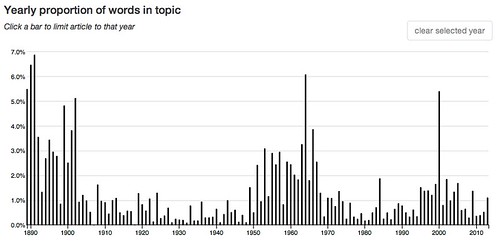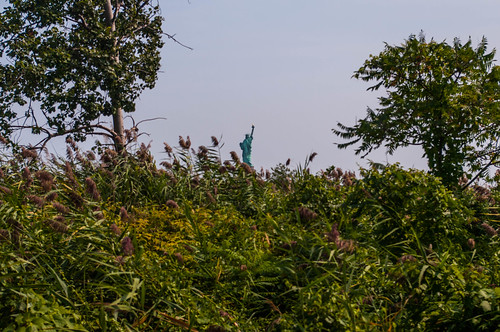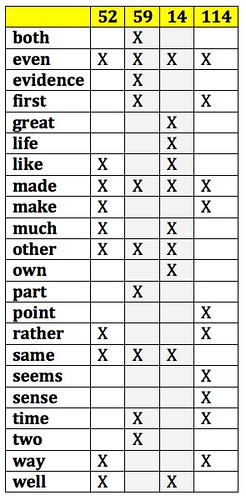Since I've just spent a fair amount of time
criticising cognitive criticism, it seemed only fair that I turn my attention to literary Darwinism, or, as Brian Boyd prefers, evocriticism. I've not written any new pieces but have gathered a number of older pieces into a working paper (title above). Links, abstract, contents, and introduction below.
* * * * *
Abstract: The central thesis of literary Darwinism is that literary culture is best considered as a biologically adaptive human capacity. Consequently, evolutionary psychology is the central psychology tool kit to be employed in examining literary phenomena. In practice, this has resulted in some interesting theoretical statements, some quite sophisticated. But it has also given us practical criticism that is rather pedestrian. This document has been compiled of six different articles written over a period of years, including one extensive formal essay-review, and a variety of shorter pieces.
CONTENTS
Introduction: What Would Darwin Say? 2
Signposts for a Naturalist Criticism 5
All Hail Our Darwinian Overlords! 23
Paradise Lost: The Faith of Evolutionary Psychology 26
Nature Culture Boyd’s On the Origin of Stories 32
Romantic Love, Conversation, Biology, and Culture 37
Do Literary Texts Count as Strong Evidence about the Human Mind? 43
Introduction: What Would Darwin Say?
Of course I have no way of knowing how the great man would react to Darwinian literary criticism, as Joseph Carroll calls it, though not all practitioners favor this label. He might well approve on the evocritics’ insistence that literature is biologically adaptive. And he would certainly approve of their instance that human psychology is necessarily psychobiology and that we can and should understand that psychology in phylogenetic context.
Yet there is much in Darwin’s intellectual practice that has little or no analog in evocriticism. Darwin was himself a prodigious naturalist, collecting specimens of life forms and describing them. Moreover, by the time he began his work he was the beneficiary of three centuries of such work. Without all this descriptive work available he wouldn’t have been able to observe the patterns which he took as evidence of evolution.
We might think of this descriptive work as analogous to close reading in literary studies, but this close reading rarely involves describing textual morphologies. Yes, we know that sonnets have 14 lines and certain characteristic rhyme schemes and we’ve amassed similar information about other poetic forms. Our sense of prose form is much more diffuse. But attending to such matters, to the analysis and description of form, has not been central to literary criticism. My own work has convinced me, however, that our texts do have identifiable morphologies, but we – the whole profession – have just not been interested in describing and identifying them. Nor have the Darwinians, despite their biological inspiration.
Nor do they have any evident interest in the evolution of literary forms. That might be because there is no off-the-shelf account of cultural evolution that’s adequate for these purposes – memetics, for example, is questionable. But why not take that lack as an intellectual opportunity? Why not undertake the descriptive work on which such a cultural evolutionary account of literary form could be based? [1]
But I’m riding my own hobby horse at this point. The fact that the Darwinian critics haven’t undertaken a certain biologically-inspired intellectual enterprise is no criticism of the one they have undertaken. That’s what makes up most of this document (see descriptions after the asterisks). I wrote most of these pieces several years ago, and they are quite different in character. The descriptions below should give you some sense of what’s in them.
I would, however, like to comment on one issue that’s central to their thinking, the biological adaptive value of literature. I think it’s an important question, and an interesting one, but I wax hot and cold on whether or not we’ve got the means to discuss it in a useful way. The big problem, of course, is that we have so little evidence of behavioral evolution. We don’t know what our ancestors were doing. We’ve got artifacts of various kinds, stone tools, rock art, and so forth, and we’ve got skeletons and skulls. These give us clues, but only clues.
So we’ve got do a lot of constructing and inferencing to arrive at a conclusion. The whole apparatus strikes me as being rather rickety. Still, in my book on music, Beethoven’s Anvil (2001), I argued that music had an adaptive value, and that was its ability quell anxiety. More recently Michael Austin has argued that anxiety has driven the origins of literature, Useful Fictions: Evolution, Anxiety, and the Origins of Literature (2011). I’ve not yet read it, but intend to do so. Obviously I’m disposed in favor of the overall argument.
For the moment, then, THAT’s my suggestion about the adaptive value of literature: it reduces anxiety. More generally, that’s the adaptive value of expressive culture in general, the arts, ritual, and religion. Not only that but I believe that THAT, the role expressive culture plays in reducing human anxiety, gives it causal force in history. But that’s a large argument, well beyond the scope of these notes. I note only that it’s an argument about cultural evolution, not biological evolution.





































